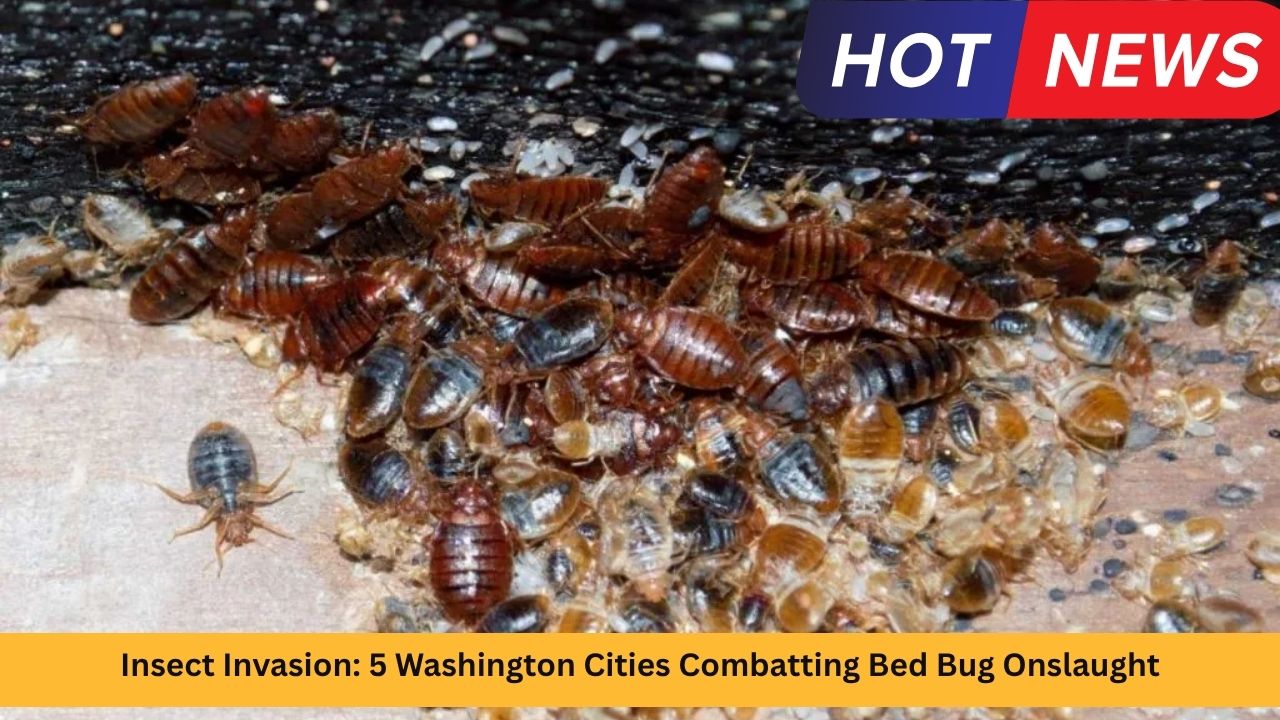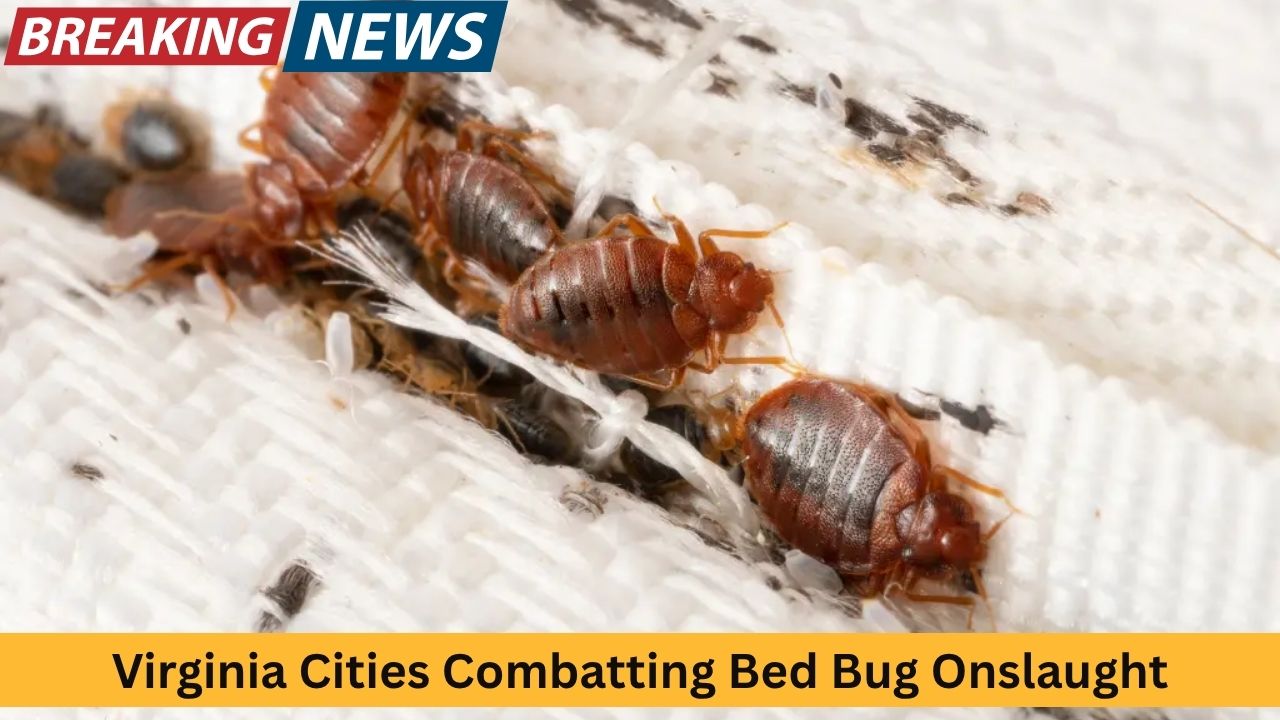Washington State, known for its lush landscapes and vibrant urban hubs, is facing an unsettling crisis: a growing invasion of bed bugs. Once thought to be relics of the past, bed bugs have made an aggressive return, infiltrating homes, apartments, hotels, public transport, and even office buildings. Despite the state’s technological advancements and modern infrastructure, several cities have become hotbeds for bed bug activity. In this comprehensive exploration, we will uncover how five major cities in Washington are combating this resilient pest, the science behind their resurgence, and what residents can do to protect themselves.
Understanding the Bed Bug Resurgence
Bed bugs (Cimex lectularius) are small, parasitic insects that feed exclusively on blood. Their resurgence over the past two decades in the U.S. is linked to increased travel, insecticide resistance, and a lack of public awareness. These pests are notoriously hard to eliminate due to their adaptability and ability to hide in the smallest cracks and crevices.
Washington’s urban centers are particularly vulnerable due to their population density, housing diversity, and transient populations. According to recent pest control data, Washington ranks among the top states for reported bed bug infestations, with the majority concentrated in urban and suburban communities.
Seattle: The Epicenter of the Bed Bug Crisis
Seattle, the Emerald City, has consistently ranked high in national bed bug infestation lists. The city’s tech-driven economy draws global visitors, increasing the risk of bed bug transmission through travel and hospitality sectors.
In neighborhoods like Capitol Hill, Belltown, and the University District, apartment dwellers have reported rising infestations. In 2024, Seattle’s public health department noted a 27% year-over-year increase in bed bug complaints. Local exterminators, such as Seattle Bug Busters, have seen a doubling of service calls since 2023.
The city is responding with an aggressive multi-agency strategy:
-
Mandatory bed bug disclosure laws for landlords.
-
Public awareness campaigns at public libraries, shelters, and schools.
-
Free inspection programs for low-income housing.
Despite these efforts, high rental turnover and dense housing continue to challenge the city’s progress.
Spokane: A Hidden Battleground in Eastern Washington
Spokane, Washington’s second-largest city, has quietly become a bed bug hotspot. Unlike Seattle’s international draw, Spokane’s issue stems largely from multi-family housing and economic disparities.
A 2025 study by a Spokane housing nonprofit found that nearly 12% of all public housing units had reported at least one infestation in the past year. Neighborhoods like Hillyard and West Central have been disproportionately affected due to older housing stock and limited tenant rights awareness.
The city has taken a grassroots approach:
-
Partnership with Spokane Regional Health District to offer training to tenants and landlords.
-
Implementation of heat treatment subsidies for low-income residents.
-
Launch of “Bite Back Spokane,” an educational program in schools and community centers.
Community leaders emphasize the importance of quick reporting and coordinated treatment to contain outbreaks before they spread.
Tacoma: Shipping Routes and Tourist Hubs Under Threat
Tacoma, home to Washington’s largest port, faces unique bed bug challenges tied to the movement of goods and people. The city’s growing hospitality industry, driven by nearby Mount Rainier tourism and convention centers, has exacerbated the spread.
In 2024, over 300 complaints were filed related to bed bug activity in downtown hotels and short-term rentals in Stadium District and Old Town. Notably, Tacoma’s Union Station reported sightings in public waiting areas and restrooms, prompting transit authorities to implement emergency pest control sweeps.
Tacoma’s strategy includes:
-
Enhanced inspection protocols for hotels and Airbnb-style rentals.
-
Training workshops for housekeeping staff across hospitality chains.
-
A centralized online reporting tool managed by the Tacoma-Pierce County Health Department.
While progress is visible, city officials admit that continued cooperation from private businesses is critical to long-term control.
Vancouver: Bed Bugs on the Rise in the Suburban South
Located just across the Columbia River from Portland, Oregon, Vancouver, Washington has seen bed bug cases spike over the past three years. The rapid growth in population and development of high-density residential complexes has led to an increase in infestations, particularly in neighborhoods such as Hazel Dell and Orchards.
Pest control companies in Vancouver report a 40% increase in bed bug treatment requests between 2022 and 2024. The city’s suburbs, once immune to such urban problems, now face challenges similar to larger metros.
To respond, Vancouver launched:
-
Inspection mandates for apartment complexes with recurring complaints.
-
Collaboration with Clark County Public Health for quarterly infestation audits.
-
An emergency response team for infestations in schools and elder care facilities.
Vancouver’s proactive approach has slowed the spread, but officials caution that the fight is far from over, especially with bed bugs’ ability to survive months without feeding.
Everett: Industrial Zones Become Unlikely Hotbeds
Everett, with its blend of residential zones and industrial facilities, presents a surprising case in the Washington bed bug narrative. While not traditionally seen as a major travel hub, Everett has experienced a notable increase in infestations across both homes and workplaces.
The Boeing manufacturing plant and other large employers attract a commuter workforce, creating a perfect storm for pest transfer between locations. According to Snohomish County pest control reports, workplace infestations have tripled since 2023, particularly in warehouses and lunchrooms.
Everett’s unique strategy includes:
-
Monthly educational briefings at major industrial employers.
-
Sanitization protocol updates in public buildings and transportation.
-
A new mobile app called “BugWatch Everett” that helps users anonymously report suspected infestations and get referrals to certified exterminators.
The city’s industrial focus on pest prevention may serve as a model for other areas facing similar work-based infestations.
Why Are Bed Bugs So Hard to Eliminate?
Unlike many pests, bed bugs are nocturnal and highly resilient. They can survive up to a year without feeding, hide in electrical outlets, mattress seams, behind wallpaper, and even inside laptops and books. Conventional pesticides are often ineffective due to resistance developed over generations.
Compounding the issue is the social stigma associated with infestations. Many residents are reluctant to report them, fearing embarrassment or eviction. This delay allows the problem to spread to neighboring units and public areas.
In Washington, limited landlord accountability and inconsistent pest management standards contribute to the growing crisis. As each city scrambles to develop localized solutions, experts emphasize the need for a statewide policy addressing inspection, reporting, and tenant protections.
The Financial Toll on Residents
The economic impact of bed bug infestations is staggering. Treatment costs in Washington typically range from $800 to $2,500 depending on the severity and size of the property. For low-income families, this cost can be devastating. Additionally, the costs extend beyond extermination:
-
Replacing furniture, mattresses, and clothing.
-
Lost wages due to time off for treatment or recovery.
-
Medical expenses from allergic reactions or infections.
In cities like Spokane and Everett, local charities have stepped in to offer assistance, but the demand far exceeds the resources available.
Public Transit and the Spread of Bed Bugs
Seattle’s King County Metro, Sound Transit, and Spokane Transit Authority have all reported periodic sightings of bed bugs in buses and light rail. While not primary breeding grounds, public transit serves as a transmission vector. Even brief contact with infested clothing or bags can spread pests to homes, offices, and schools.
To combat this, cities have:
-
Invested in anti-pest upholstery and routine vehicle fumigation.
-
Installed warning signs and contact info for passengers to report sightings.
-
Offered staff training on spotting early signs of infestation.
What Residents Can Do to Stay Safe
Despite the alarming trends, Washingtonians can take preventive steps:
-
Regularly inspect bedding, mattress seams, and baseboards.
-
Avoid buying used mattresses or furniture unless certified pest-free.
-
When traveling, inspect hotel rooms and keep luggage elevated.
-
Wash and dry clothes on high heat after returning from travel.
If you suspect an infestation, immediate professional treatment is critical. DIY solutions often worsen the situation by scattering the bugs into new hiding spots.
Future Outlook and Statewide Cooperation
Washington’s fight against bed bugs is far from over. Experts suggest the formation of a unified task force to streamline reporting, inspection standards, and landlord-tenant accountability across the state. A central database tracking infestations and progress could also help allocate resources efficiently.
Moreover, investments in research for non-toxic, long-lasting pest control options will be vital. As resistance to conventional pesticides increases, innovations like heat chambers, freezing technologies, and bed bug-sniffing dogs are becoming more common.
Conclusion
From Seattle’s urban high-rises to Everett’s industrial parks, bed bugs are proving to be a resilient and pervasive threat. Washington’s cities are rising to the challenge, but success depends on collaboration between public health officials, landlords, residents, and pest control experts. Awareness, transparency, and swift action are key to turning the tide in this insect invasion.
As Washington continues to evolve, so too must its strategies against these tenacious invaders. Only with a coordinated, long-term approach can the state hope to reclaim its homes, buildings, and communities from the grip of this tiny but mighty foe.













Leave a Reply